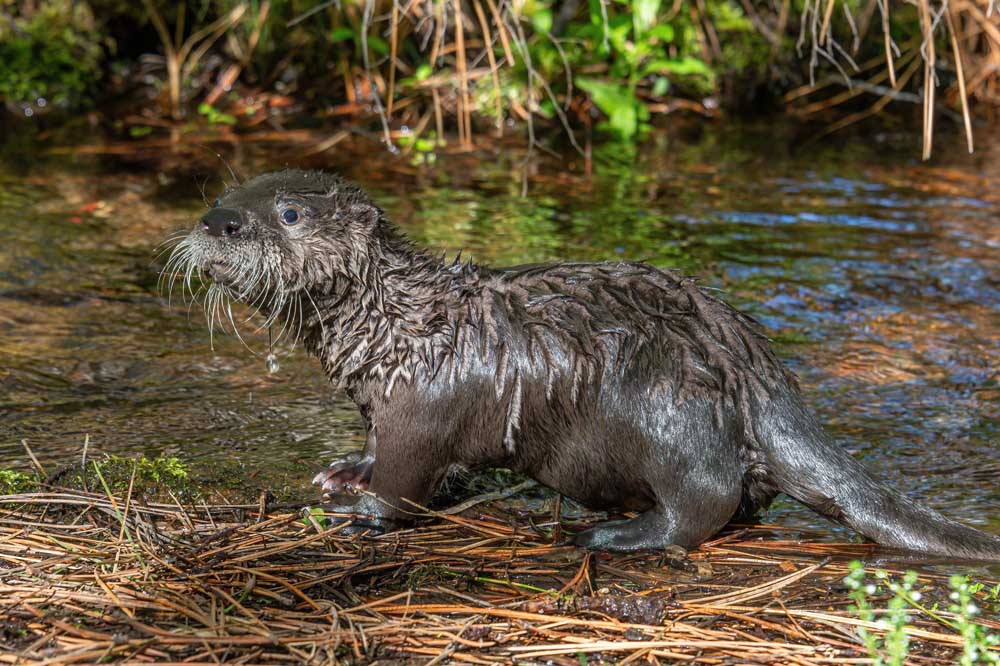The High Desert Museum’s newest otter finally has a name: Wesley
Published 4:45 pm Monday, February 13, 2023

- This orphaned baby North American river otter was found emaciated and severely dehydrated. Shown here in June, 2022, Wesley is now thriving at its new home at the High Desert Museum.
When the North American river otter pup arrived at Bend’s High Desert Museum in May, he was about eight weeks old and in bad shape — thin, dehydrated, motherless.
Since then, he has grown from 2.4 pounds to roughly 15. And now he has a name: Wesley.
His name is a combination of the direction “west” and “lea,” or a grassy clearing in the forest. He was found orphaned on a golf course near Sunriver about a week before Memorial Day, and after wildlife authorities could not locate his mother, it was decided that he was to remain at the museum.
The name Wesley was decided by a member of the Bounds family, a longtime supporter of the museum who earned the opportunity to name Wesley during a museum fundraising auction in August.
Jon Nelson, the museum’s curator of wildlife, commented on Wesley’s recovery while standing near the enclosure on Monday, a brisk and clear winter’s day. Snow fell as the sun peeked through the trees. The museum’s three otters scampered nearby, at times standing on their hind legs, checking out the humans gathering nearby.
Nelson said it’s been a long process getting Wesley acclimated to live in the enclosure with his two otter companions, often requiring between three or four hours of care each day.
He taught Wesley to swim in a nearby stream, gradually increasing the depth until he was comfortable putting his head under water.
He helped nurse Wesley back to health, at first with a bottle and later with food that is as close as possible to what they eat in the wild.
He helped Wesley and the other otters become comfortable around each other, slowly allowing them together one-on-one because you never know how they might react.
And he dealt with Wesley’s rambunctious attitude: Like any wild animal would, sometimes Wesley bites.
“I’m just glad we were able to give him a good home,” said Nelson, donning a black Columbia vest, blue jeans and a green sweater. Tucked under his arm was a box of lake smelt that he would pitch over the enclosure walls for the otters’ lunch.
Wesley is among the 100 animals that receive care at the museum. There are two other otters: Pitch, who was found on the Metolius River and brought to the museum in 2017 at 7 weeks old; and Brook, who is approximately 10 years old.
The animals that receive care at the museum cannot be released because they are injured or have become too familiar with humans. Some may not have learned how to hunt or avoid predators in the wild, so now, museum employees take care of the animals and use them to educate the public about the High Desert ecosystem.
That’s the case with Wesley. When he came to the museum, he was, as Nelson put it, “a jerk.” Others at the museum described him as “rambunctious” and “assertive.” At first, he was a bully, stealing food from the otters and occasionally prompting scuffles, which sound similar to a cat fight.
“When we introduced him, he had very poor manners,” Nelson said.
But since then, the three otters have grown used to each other. On Monday they took a few moments to groom one another while swimming through their pools. Nelson can quickly tell who’s who: Because he’s a younger otter, Wesley has a lot more energy than the other two, playing around and showing off for kids while the other otters take naps in their den.
Nelson said that having these otters drives home the museum’s goal of promoting nature conservation in Central Oregon. As more people migrate outdoors, he said wildlife authorities are seeing more examples of wildlife disturbances.
Some people let their dogs off the leash in areas they shouldn’t. Others get too close to wildlife or walk through areas that are closed off.
“All those things impact wildlife very, very negatively,” he said.
Nelson said it’s important, then, to abide by the rules of the outdoors and steer clear of wildlife to ensure they remain protected.
“The High Desert region is often very arid, but it’s filled with all kinds of riparian areas — rivers, lakes and streams,” he said. “Otters are abundant here, and they’re a great ambassador species for us to be able to talk about conservation in our community.”






